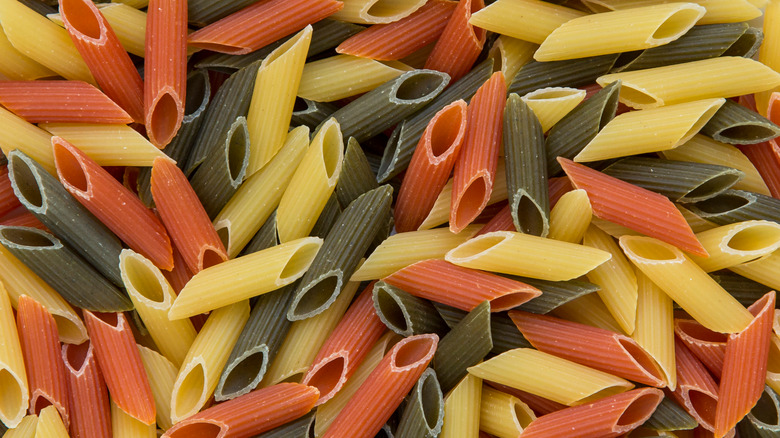How Pasta Gets Its Different Colors
If you've ever spent time perusing the pasta aisle at your local grocery store, you may have seen boxes of multicolored pastas. But what gives the pasta its unusual colors? (Hint: it's not food coloring!)
According to Share the Pasta, pasta may have been around since sometime in the fourth century B.C., and noodle-like foods were being enjoyed in China around as early as 3000 B.C. Thomas Jefferson is credited with bringing a macaroni machine to America in 1789, after visiting France as an ambassador. Part of pasta's popularity is its versatility — it can be found in all kinds of cuisines, ranging from Italian spaghetti and lasagna to Japanese ramen, and Chinese lo mein.
Not all pasta is created equally — some colored pastas may taste different, depending on what ingredients are added to the pasta mix during production, though the flavor may be subtle. You may even be inspired to make it yourself at home!
Pasta pigment is changed with additions
Whether you buy your pasta from the store or make your own at home, there are several ways that pasta can be multicolored. The base for making pasta starts the same: flour, semolina flour, salt, and eggs. After making the base, a few different ingredients that can be added, depending on what color is the end goal, explains Britannica. The best part? Most additives are all-natural!
For green pasta, they suggest adding spinach juice. For a vibrant red, beet juice is the way to go. Eggs are already commonly added to homemade pasta, and the yolks will give the dough a bright yellow tint. Barilla's tri-color rotini lists dried spinach and dried tomato on the ingredients list to achieve green and red hues. Though the vegetable flavors may be very subtle — especially after being tossed in sauce — it is still a great way to get some extra nutrients.
Add some flair to your pasta dinner and swap some multicolored pasta into your dishes!

